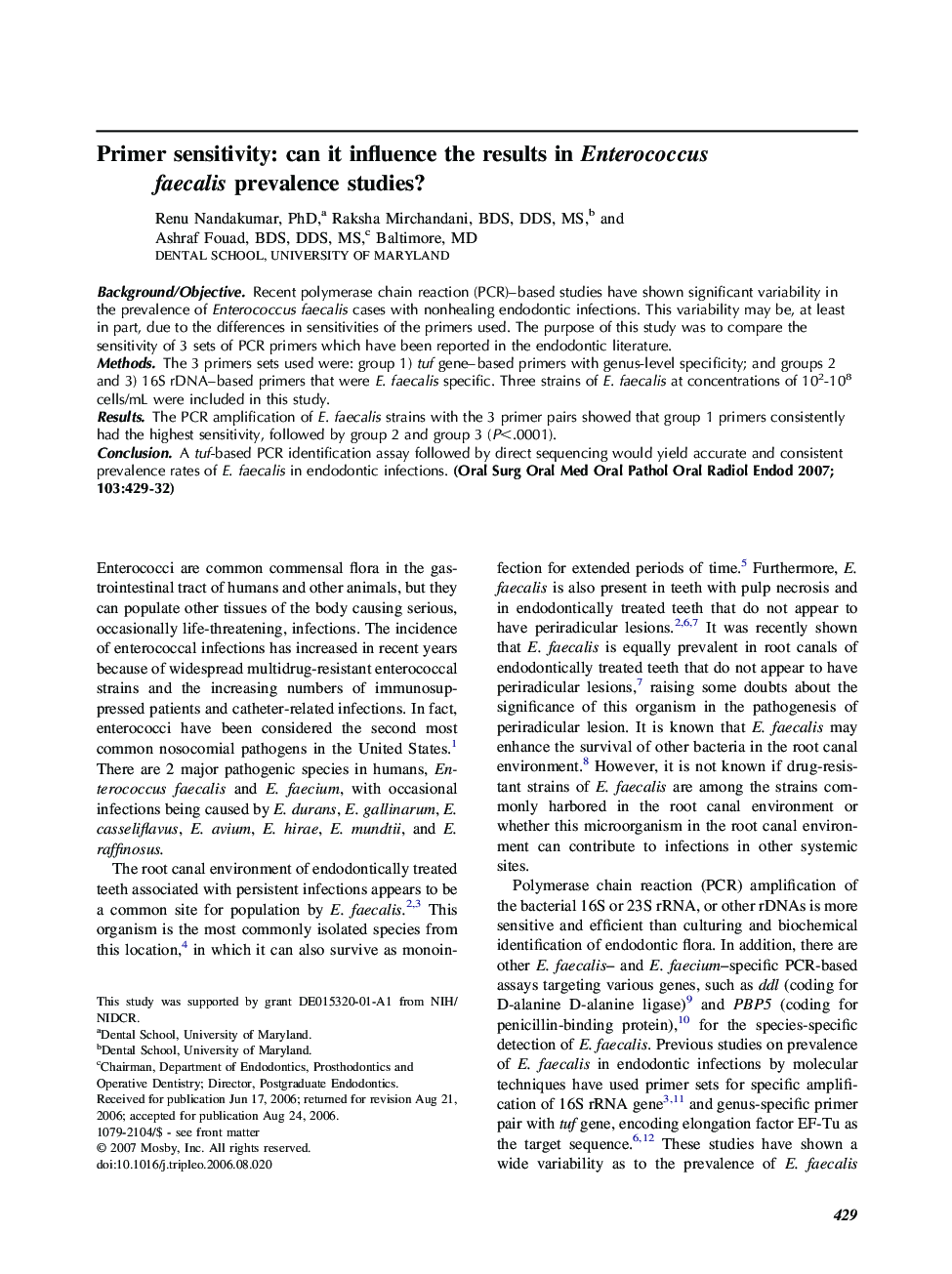| Article ID | Journal | Published Year | Pages | File Type |
|---|---|---|---|---|
| 3169544 | Oral Surgery, Oral Medicine, Oral Pathology, Oral Radiology, and Endodontology | 2007 | 4 Pages |
Background/ObjectiveRecent polymerase chain reaction (PCR)–based studies have shown significant variability in the prevalence of Enterococcus faecalis cases with nonhealing endodontic infections. This variability may be, at least in part, due to the differences in sensitivities of the primers used. The purpose of this study was to compare the sensitivity of 3 sets of PCR primers which have been reported in the endodontic literature.MethodsThe 3 primers sets used were: group 1) tuf gene–based primers with genus-level specificity; and groups 2 and 3) 16S rDNA–based primers that were E. faecalis specific. Three strains of E. faecalis at concentrations of 102-108 cells/mL were included in this study.ResultsThe PCR amplification of E. faecalis strains with the 3 primer pairs showed that group 1 primers consistently had the highest sensitivity, followed by group 2 and group 3 (P<.0001).ConclusionA tuf-based PCR identification assay followed by direct sequencing would yield accurate and consistent prevalence rates of E. faecalis in endodontic infections.
